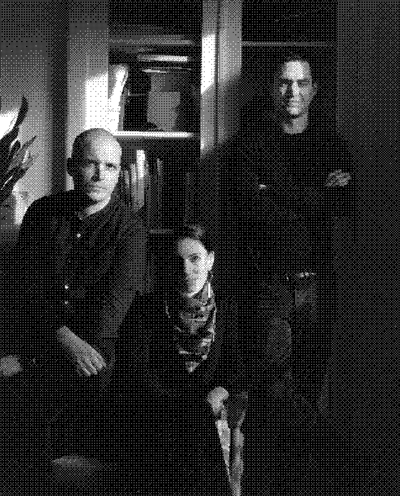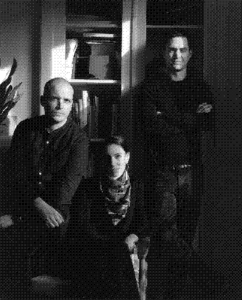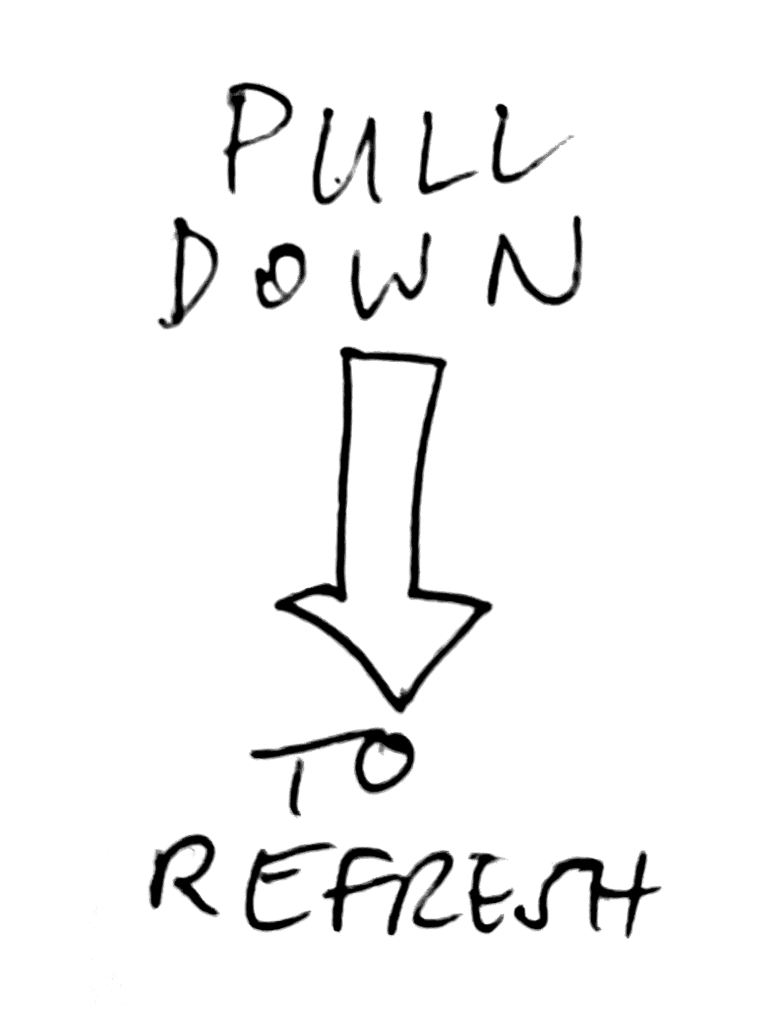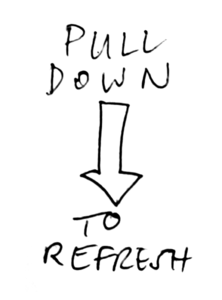Hi Eike, could you please introduce yourself?
I’m Eike König. I was born in Hanau and currently run a design studio in Berlin. Its main focus is on branding for cultural institutions as well as for commercial brands such as Chanel, Nike and so on. I am also a professor of graphic design at the university of Arts in Offenbach. I have my artistic practice and I am also a father, and a lover, and a citizen… (laughing)
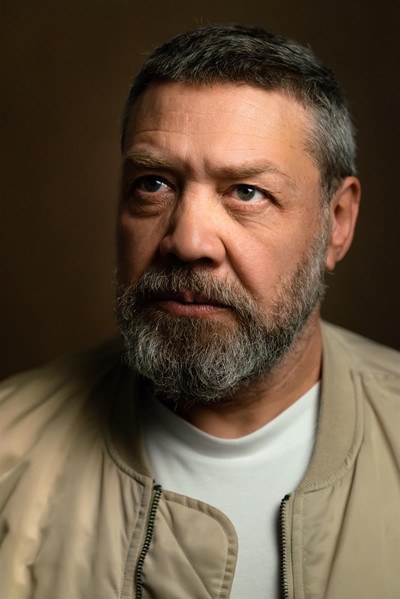
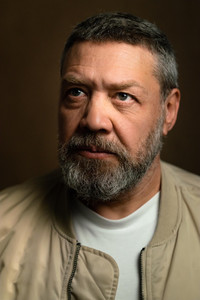
Eike Koenig, Photo: Ralf Hiemisch
What is your current state of mind?
I don’t know. I’m living in between everything right now. University has just stopped and we’re in the end-of-semester break. It’s the first week so I’m back in the studio and I have a lot of production to do. I am splitting my time a lot: right now I am preparing a lot of scheduling, deadlines… There’s a lot of organization going on right now… And also, spring is in the air. It’s a specific moment in the year, when things are turning. There are things ending and things coming up at the same time, and it looks like a war is starting in Eastern Europe. There are a lot of intense moments taking place, so my mind is not focused; it is distracted by a lot of things.

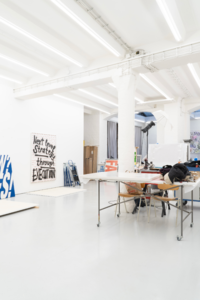
Hort Studio
How much time does teaching take you?
I go there two days per week.
So it’s a very important part of your life, isn’t it?
Yes, and a year at the university is split into two semesters, and each semester into two periods: one when you are teaching and the other one when you are not teaching. So, when I have to go to the university, I can’t do anything else. I can’t think about my production, for instance, but this is something I decided to do. When I started teaching in 2011, I wanted to do everything at the same time, which started to kill me; I was having to answer phone calls during lunch breaks and work at night. I decided that I had to change the structure of the studio so that responsibilities could be shared. I had to let a director of operations be completely responsible of managing the projects and let everyone involved in the design be responsible for design and production. Since I changed the structure, I am no longer involved in most parts of the studio work, so I can split my time between university and the studio. But I do have to go there too; it is important to be present for them, to have discussions with the group, to speak about the work. The last two years were a little bit difficult because of Covid, as we were only meeting online. It works with people I’ve known for a long time or with students I’ve known for two or three years. But for the younger ones who had just started, it was difficult. Talking about creative things in person, in a group, has a different energy than doing it virtually. Communication is not only about the voice: it’s about the whole body, the space in which you are located. I think we’re not used to meeting only virtually or maybe it’s just too fresh, maybe we’ll become more professional, but I believe it is important to be present.

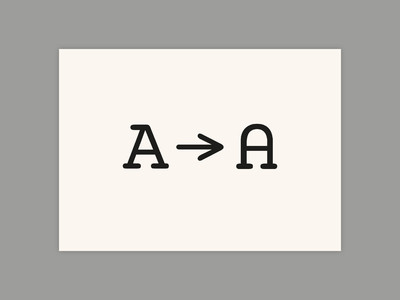
Bauhaus Typeface
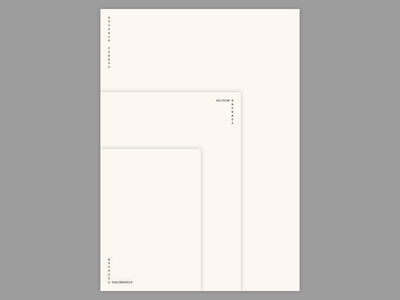
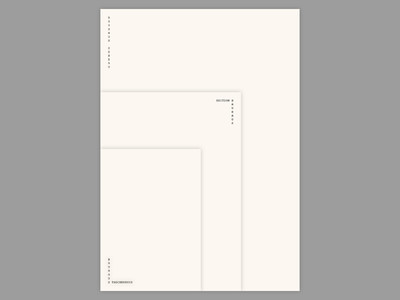
Bauhaus Typeface

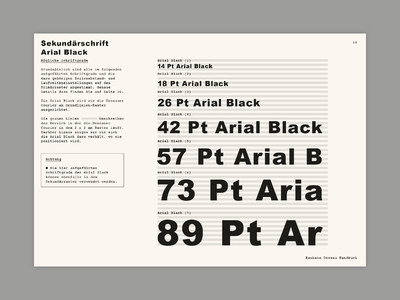
Bauhaus Typeface


Bauhaus Typeface
When you mentioned the strong tensions between Ukraine and Russia, it reminded me of the reasons that got you into graphic design, the role the Cold War played in all of this, the data visualisation. Can you explain that?
It is a strange trigger, but my parents were very politically active and I found it very moving how the infographics about the situation were telling the story in a precise way. I wanted to know who was doing all these graphics and how they were able to tell such a complex story in such a simple way. I wanted to know who designed these powerful languages. My interest in graphic design comes from that. I was also very much into music. When I was a teen I was trying to explore my work differently and trying to understand what I saw. Whether it was infographics or graphic design for an album cover, I would think about how someone had designed it. I started to get interested in the things behind the things that we could see. There was also the fact that my father was an architect and I would see him drawing at home on these huge tables: details of constructions, houses and stuff like that. And this was still abstract, just technical drawings of what was going to be built, but it was a glimpse. So, since I had access to the drawings, I was already beginning to make the link between the result I could see, enjoy, or use, and the person behind it.


And you eventually became the person behind graphic representations of music… What did you learn from this experience in the music industry?
This record label was very technology driven. They were very successful with the music they had been producing and they loved technology. The art department I entered had Macintosh computers; we were the first ones to have email and a website. There was this great movement into technology there, which was developing in parallel with the movement into techno music. When I did an internship there, I was still a student designing with my hands, but once I started using a computer, I fell in love with the possibilities: speeding things up through new technology, new aesthetics. It just opened a lot of doors for your creativity; suddenly you could imagine new things. We also had a Techno Club for which I was designing flyers and posters, and suddenly DJs became heroes, Gurus. The night Faithless was playing, it was amazing: you just had to be there. The energy, the masses that were moved by the whole thing. It was amazing. It felt like a Revolution. Especially when you are young. I was 20, 23. You felt connected, like you were part of a community.
It happened on many levels for me: I suddenly found myself working with computers for products I really liked. My bosses liked my ideas. They allowed me to experiment with aesthetics, with different styles, and I felt very supported by them. Eventually, I became the art director of this label. When I had my first interns coming into my studios, I was responsible for setting up the art department and taking care of all the graphic design that was developed there. That experience helped me on lot of personal levels and with self-confidence. As a student at university, I hadn’t felt accepted or supported as a creative person. The feedback I got from university was often very harsh; I felt like they were trying to break me, to make me unsure of what I was doing. I remember all these moments when they mocked me in public, like a professor saying “Your design is so bad, you should stop studying design, you should become a baker.” And that was always in public. I’m not sure that it was meant to be part of the education.


Bergen Assembly Identity

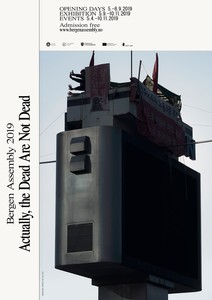
Bergen Assembly Identity

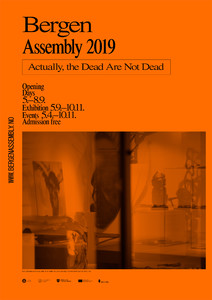
Bergen Assembly Identity

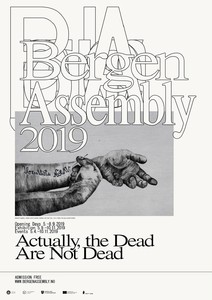
Bergen Assembly Identity
Let’s go back to the beginning. You did this internship, but then you founded Hort very young. What gave you this will to be independent and start your studio so quickly?
In the art department at Logic Records, I was designing a lot of records, going to a lot of great parties and concerts, and meeting a lot of people in music. Suddenly, Andreas Dorau asked me if I could design his next record. He was with another label, Motor Music, in Hamburg. I was working for one label and another label asked me to work for them, so my question was: “Do I want to be an employee?” At the time, my job was still interesting, but I felt that there were more opportunities to be had working independently. I had a discussion with the manager of Urban Records, Sascha Basler, who offered me a contract to design 30 records per year. And it felt like a really safe bet to start my studio like that. So I could have my own projects that felt more like me, with no boss, on my own, responsible for my decisions. When you work for a company, you have to cope with the system that is planned out and you either feel comfortable with it or you don’t. I did feel comfortable but I thought that being self-employed would make me happier. That’s why I started Hort in 1994. I was young, but anything can happen when you are young. I was also naive and full of energy; it felt so adventurous.
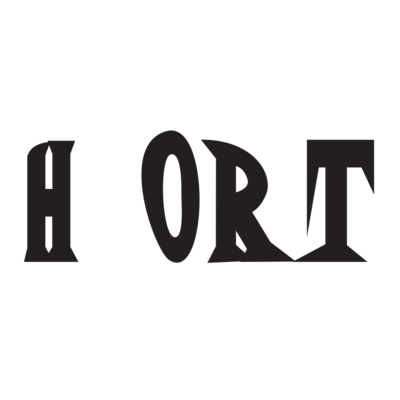

Hort Logo
You wrote your own eight rules. Did you do that from the beginning?
In those days, I liked the manifestos of other studios. So I set up my own as guidance. I am not educated as an entrepreneur. I was not trained. I knew how to deal with bosses, but didn’t know about having my own clients, working on my own, how much I should charge… And writing that set of rules helped me to stay closer to me, to always stay close to my original principles for starting the studio. That was my ideal working environment. I always kept them in the back of my mind and I would bring them back to the front to check whether I was still connected to the rules. I still look at them.
Because they are still great, still relevant.
They are so simple, yet so true.
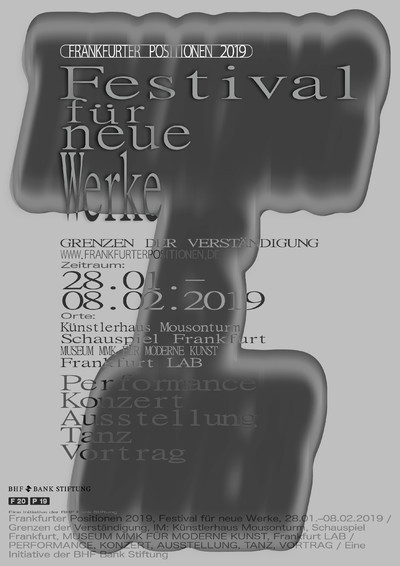

Frankfurter Positionen 2019 Identity

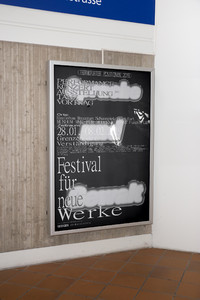
Frankfurter Positionen 2019 Identity
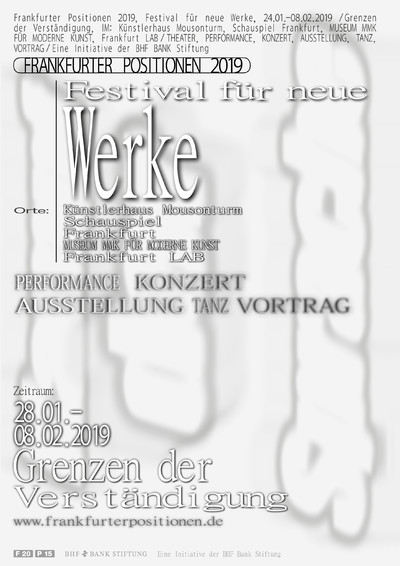
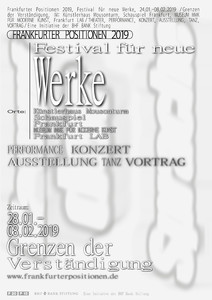
Frankfurter Positionen 2019 Identity
They definitely are. There’s one of your rules we really like: “Don’t be a client execution tool.” You mentioned one turning point when you began teaching in 2013. There is still another massive turning point: working without a client, at the Villa Massimo residency. Could you tell us about this?
(laughing) Maybe in this case I didn’t need rules. It was a great honor for me, usually a graphic designer in Germany does not get something like that. Villa Massimo is the greatest art residency in Germany. It’s great having time off from studio duties, being paid, having a place to stay in the middle of Rome and only having to think about how to make the most of this once-in-a-lifetime opportunity. For nineteen years I was used to being paid for the work I was doing and suddenly I had space and time and money, and they didn’t really want anything back from me. When I got there I said to myself: “I have the chance to go back in time, to that period when I was a student without digital tools and without a network of people.” The idea was to be completely on my own and to develop something out of myself. It felt like a good new rule, jumping into a project without knowing the end product, or how to produce it. It helped me to experience a lot of things I hadn’t experienced for a long time. A lot of fear came up for me; if you don’t have a task, it’s really hard to manage the target and it’s hard to find a way to move towards that target. Not producing anything, that was my position. Are we only creating value by producing something? Or is the time you spend before producing also valuable? In art you call it muse: the time you spend thinking, walking, having an inner monologue with your ideas, struggling, and then coming to a certain result, when you are drawing, writing, designing something.
I suddenly realised that people should pay me more for this time, rather than paying me to produce; that goes against what our society thinks. We are still getting paid to design a book, but developing and designing the whole idea, the visual framework with which you can design the book, is not really paid for. So I understood that our industry is completely wrong; if you pitch for a project, you are getting very little time and money; and that’s wrong. People should pay for the ideas, for the concept, for the big system we manage to create, all these items, the posters, the flyers, that is work based on the set of rules that you designed. At that time, the way I was speaking with clients changed. I started trying to educate them, to teach them that ideas have value and not the product because anyone can design a product.
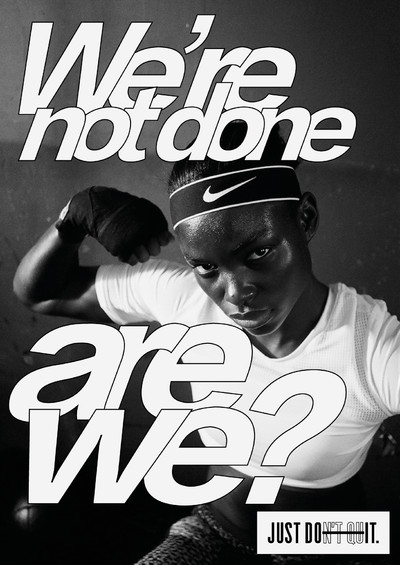

Nike poster


Revolver Identity

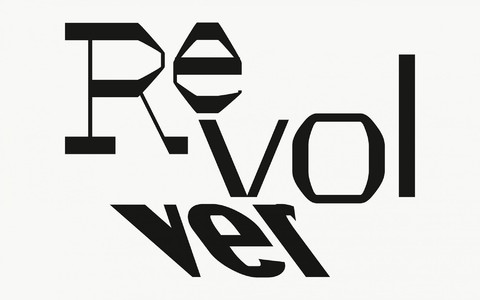
Revolver Identity
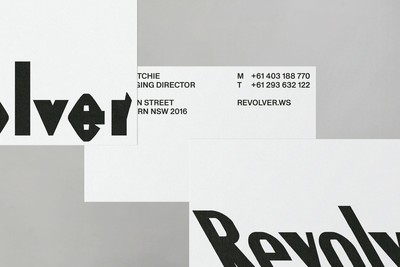

Revolver Identity
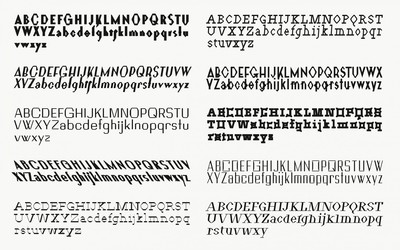
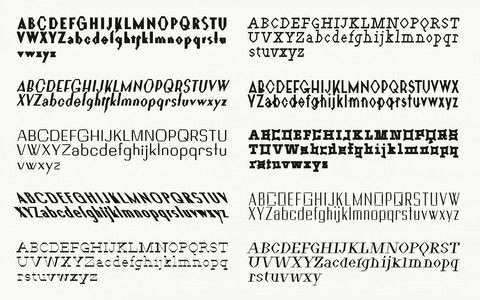
Revolver Identity
There is a famous quote by Renoir: “This drawing was done in five minutes, but it took me 60 years to get there.”
Yes, that’s it… The focus for me was to have time and also accept the idea of not producing anything. And the idea started growing. I started this printing studio. I managed to find a material I could use for printing. I went to libraries and did a lot of research, used copy machines to record findings and scale things, make them bigger. I would make things usable for me. I started to handprint an inner dialogue at the beginning. Then, after a while, I started to collaborate with artists who were at Villa Massimo at that time. But I set rules: using the same type of paper, the same typeface in a specific size. Whatever I have to say, it has to stay in this framework. I’m making rules that help me to stay focused. The more you reduce your possibilities, the more you can explore the potential; you are not distracted by other possibilities. I really thought that, after a couple of months working with this system, I’d get tired of it and have nothing to say anymore.
You are still producing in that system, aren’t you?
Yes, that’s the thing: the more I use it, the more I get used to it. My thinking changes and I can explore. When you spend a long time on something, you need to dig deeper and deeper to still find the potential.
How was it going back to Berlin? Back to “reality?” How did the studio get on while you were in Rome?
I don’t remember… I also invited people from the studio to join me there. Tim was there for a week and I had been working with him for a longtime. We did a project together there. I also did collaborative projects with Nathan and Jacob from Haw-Lin services. People always came for a week, living and working with me. I don’t remember how the studio was working.
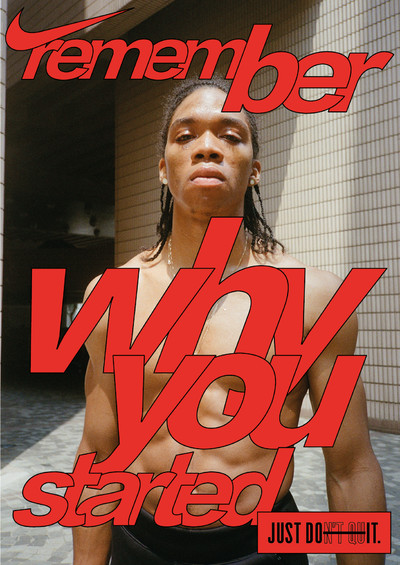

Nike poster
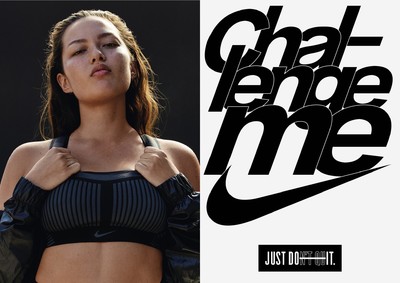

Nike poster
What happened when you came back? We know that people doing Villa Medicis sometimes find it hard to come back to their previous activity.
I didn’t stay there for an entire year…
How long did you stay?
2 months.
Yes, that’s different, still great, but different.
Yes, totally different. I found something new, but at the same time, thanks to my newfound understanding of the value of ideas, I understood I needed to talk differently to my clients. I was looking forward to working under these new conditions at the studio. I felt like it was just a certain amount of time I was away, that it didn’t change me completely. It didn’t bring me to the point where I didn’t want to do the studio anymore; I was still motivated and could still learn a lot. I suddenly understood that I can be off for 3 months and it still works: this consciousness of how unnecessary you can be, but still breathing. I was amazed by the things that had been done. I was full of energy. I had this idea that I was going to work more on my artistic practice. I felt like I was coming back from a spa, completely recovered after nineteen years of work. I started loving Rome: the city, the neighbourhood, the community, the Italian way of living, the little rituals, the coffee breaks, the food, the new environment. I really enjoyed it a lot. I was very happy to go back, but at the same time a little bit sad. The routine comes back very quickly. I am still stepping away from the studio for two months here and there, traveling, or doing something else, and that is very important. I have a life outside the studio.

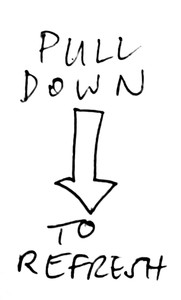
Sketch by Eike Koning
Would you say that Hort is managed without you?
Yes.
In a way it has been structured to work without you. How many people are there?
That has changed too. I always tried to adapt to the needs of people; it’s more like an organism. At the beginning I had one employee, then four, then the jobs got bigger, then we grew up to twelve, and then people started having their own businesses so we cut down to seven. And since 2015, we’ve been working as a collective with seven people. Covid came and we lost our projects. Especially with cultural institutions who had to close down and didn’t need any communication, all these big brands stopped working with us. And we had to concentrate on our personal projects to survive. I did the last two big projects with four people: Elizabeth Legate, Eloïse Rossetti, Christian Knudsen and Michel Bütepage.
What would be the ideal size of a design studio?
A group of people that you can feed with two family pizzas.
That’s one of your rules?
Yes, because if you go onto the next level, you need people in between.
Management.
Yes, the group splits into smaller groups. You still have six or seven people with whom you communicate daily, but the bigger it becomes, the more it is difficult to motivate people. At one point, I realized that my job was to manage people and I didn’t like it. They are nice people, but individuals have their needs and suddenly you have to deal with things you don’t want to deal with. Coming back to smaller size felt very natural and was good for me, I was coming back to my old position, not only managing people. I felt happier.
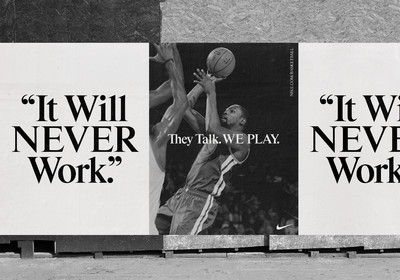
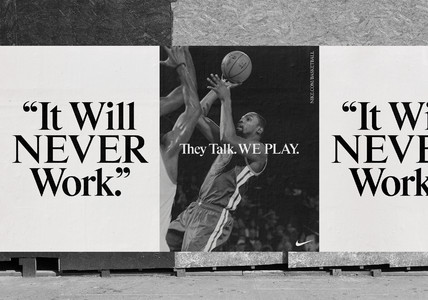
Nike Basketball
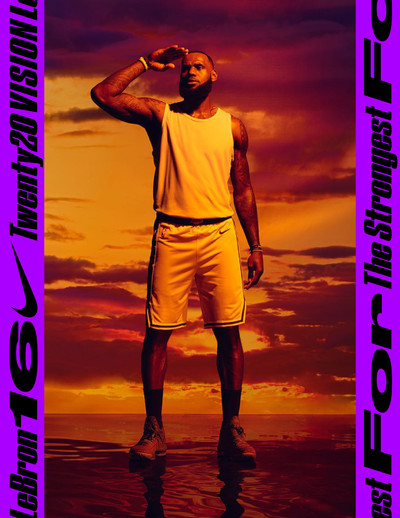
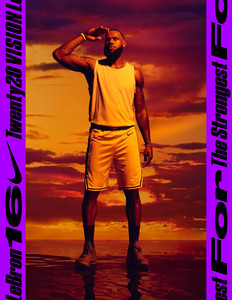
Nike Basketball Poster
You do have to make strategic decisions and organize things. How do you that? Is someone helping you?
The studio is like an organism, always adapting. Things are happening, getting bigger, getting smaller. We are not forcing things. A lot of people seem to force things, saying “we need 50 people…” I always listen to my heart… or my soul. It doesn’t always have to be a heart question; sometimes it happens in a more natural way. Clients come to us, people want to work with us, then we decide collectively if it’s a project we would like to work on, for how much money, etc. Since Covid, I’ve been doing this alone again and discussing it with Lizzy: the timing, the budget, whether it’s interesting, the client, the product, the service… It’s getting more personal now. If we do work on the project, I gather people. I don’t want to get bigger because of a project.
What we mean by strategy is not necessarily financial or cynical, but the way you decide what you want to do and how you want to do it. Did you have references? Inspirations? Did it change with the age?
Only negative inspiration. Knowing what you don’t want to do.
That is strategic.
I designed HORT based on my own experience, and I want to have a very flat organization. I want to discuss things on a flat hierarchy, to listen to people. I wanted to create a space where it is possible, first for me and also for the others. But it wasn’t a strategy, it was based on negative experience. If I have the chance to design something, why not choose the way of doing the thing that I am the most comfortable with, something that I like talking about, to make it a reference. Now there are so many studios – amazing studios – with one, two or three people: Who knows what they want to do? They also have an attitude, saying no to things they don’t want to do. It was different in my time. Maybe I was among the first ones doing it, maybe I became a reference, showing that it is possible, developing this kind of working environment where we are celebrating people, celebrating personalities, supporting them, their potential, working with them on projects. And the output is also interesting. So maybe I became a reference for other studios, in working like this. If that’s the case, that makes me very happy.
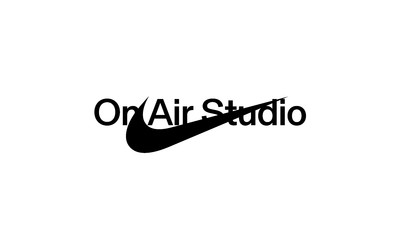
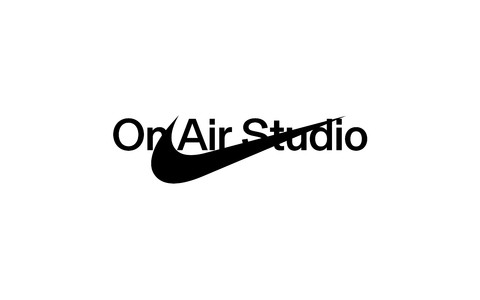
Nike Shangai Idendity
Independence is also political, do you also teach that?
(laughs) Yes. I want my students to be critical citizens and to be able to start their own businesses. Working on their personality, on their voices, understanding what the industry does, to be able to decide to whom they want to provide their skills, to work with. It is amazing to see that some big companies don’t get talents anymore because they don’t offer them anything. They are using people to produce things, and if they cannot use them anymore, they replace them with someone else. And these kids are not stupid. Having a pizza offered after ten pm, working seven days a week on shitty presentations, they understood and the clients also understood. They are big ships, they are slow, they cost a lot. Clients started to trust smaller teams: they are more flexible and they feel confident.
You also managed a quite big project, the 19M. How did it come about?
It’s a big project, but it is manageable in this five-person team. I have a very good feeling about what we can do as a studio, and what we cannot do. I don’t want to get bigger because of a project; if it’s too big, I don’t accept it because what happens after?
Chanel invited us for a pitch and usually I don’t do commercial pitches. I do pitch for cultural institutions; there is only one chance to go into it as it is public money. But this was covered. It was paid. I said okay, why not? And we worked with a team to develop a concept. When I heard who else had pitched – really great competitors, great companies – I was quite happy.
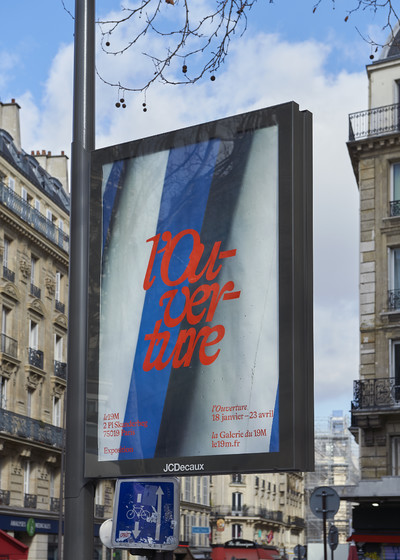
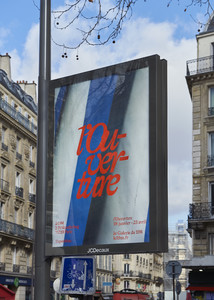
le19M Identity
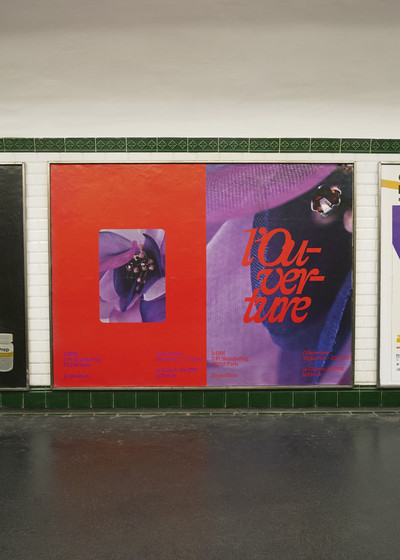

le19M Identity
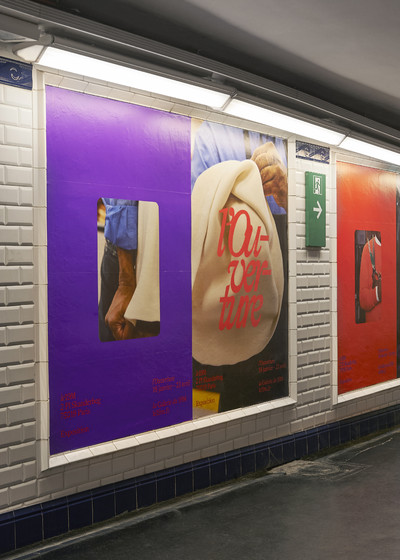
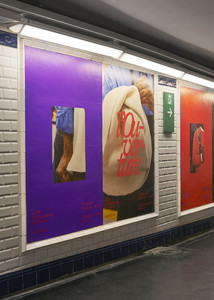
le19M Identity
Were they independents as well?
Yes, I think so.
That’s very interesting, Chanel working with independent houses for their visual identity.
Yes, so we presented to Chanel, they liked our idea, and since September 2020 we’ve been working on that, slowly defining the identity, the rules, the way to communicate on the first exhibition in the streets of Paris, the first opening. Before it was named 19M, it had a logo and the logo had a strong reference to the building. I was fighting to get away from that; you don’t need to have the building as an illustration. That’s an old idea. It is the building that becomes the icon. I was discussing this a lot, the fact that we don’t need to have such an obvious visual to the building. We all know the logos, such as the Eiffel Tower, but that’s from the past.
(…)
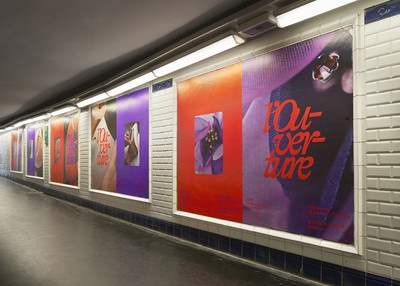
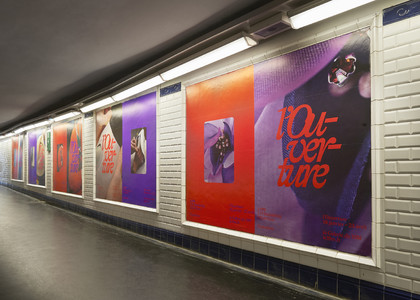
Le19M Identity
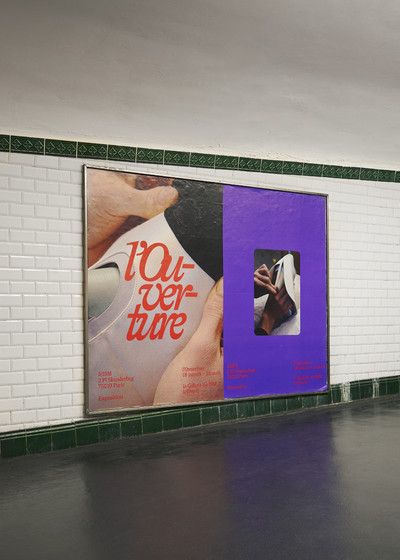
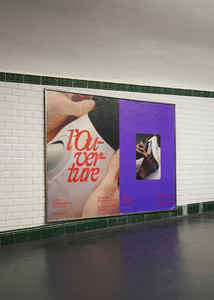
Le19M Identity
We talked about young people, you providing the blueprint for independent studios. What do you think of the current situation? What do you think about this craving for the Metaverse for example?
I am interested in that, but I am also sure that it is completely driven by big corporations. It is something they designed for us to “need.” It also feels like Second Life and I don’t see how it can be so interesting. For me we are facing problems, such as climate change, while creating parallel worlds, putting energy into creating our parallel world and identity. It is not helping us. I am interested in the potential of this technology, but in the end, representing yourself in a digital world designed by big companies in order to generate profits, where your status rises if you own something. It refers to you as an owner, as part of a chain, (…) it is just creating a huge market. I love digital fashion, the possibilities, but I’m not sure if I wanna be part of that. I’m not supporting that, to be honest. I’m reading a lot about that, also critical thoughts, to what extent it is going to be anti-democratic. I’m not sure it is the right evolution for humanity…
When the Internet was created there was a lot of potential for creativity, and now it’s mainly user experience-driven designs. You feel that the Metaverse doesn’t really exist yet, but it is already standardised, which is really scary. Do you feel this movement of independent studios could stand for a political movement? Because one could see your studio as a political statement.
I can see that there is a new political generation rising. We are having a lot of discussions about racism, but not only that. It is a movement and the problems are real, the struggle is real, it is not a figment of our imaginations. And I always invite the new generation to be politically active. One observation I always tell my students is that they can do things other people can’t do, but they can also decide to whom they offer it. They can have an influence with what they are doing, and I think a lot of people know that. We still have to make a living, but people are more sensitive about these topics, they are more aware of the power they hold in their hands. And it is time for action. Design can be used in so many ways, not just as a method to drive capitalism, but also a tool to drive information, social services, social design: to do things that have an impact on society.


Sketch by Eike Koning
Last few questions, more trivial ones: If you had to do another job, at another time in history, what would it be and when?
I’m quite happy with what I’m doing and the time I am living in. I don’t want to live in the past, but in the future I would love to do something by hand, as a carpenter, working with material, with tools that are not digital and then traveling the world with that. Like a traveling carpenter, moving from country to country.
A time-traveling carpenter… Any books you would recommend?
Designing Programs by Karl Gerstner. It is a great book for thinking how design can be, not designing a result, but a system that creates. It was a big change in mindset for me. I’m reading a lot, but more fiction.
What about fiction books?
I’m reading two books right now, one of them is Detransition Baby by Tory Peters. I have a lot of books on my desk I haven’t touched yet: Caps Lock, A Proof of Art…
Do you have a last piece of advice for young people starting their practice?
I don’t like advice. You have to go through your own shit, that’s what I learned. Don’t listen to any advice!
Thank you, it was really cool.
Thank you!


